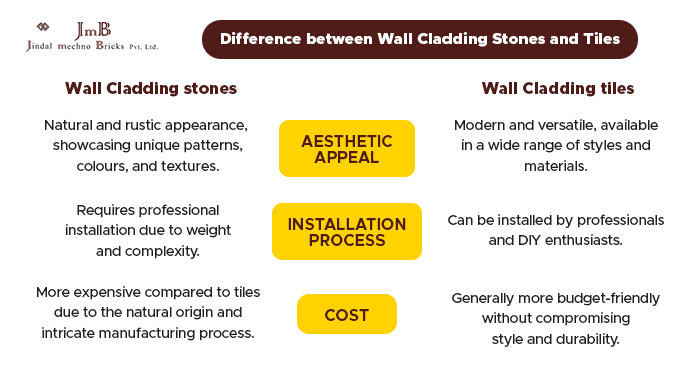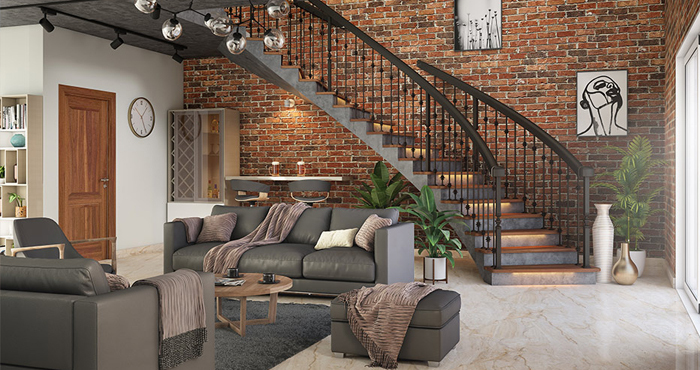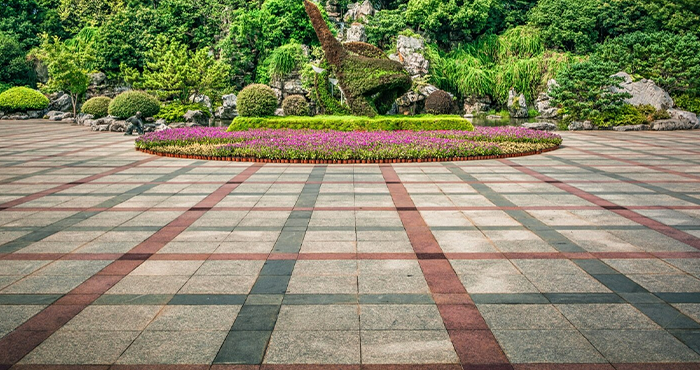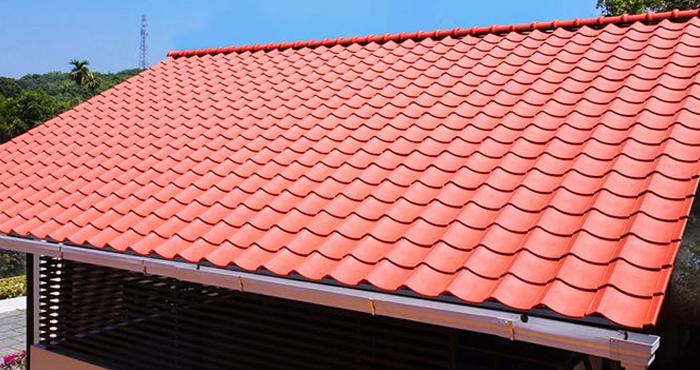When it comes to enhancing the aesthetic appeal of your interior or exterior walls,wall cladding is a popular choice. Not only does it add a touch of elegance and sophistication, but it also provides protection against weather elements and acts as an insulator.
However, when it comes to selecting the right material for wall cladding, you may find yourself torn between two options: wall cladding stones and wall cladding tiles. In this article, we will explore the advantages of both options, discuss the key differences between them, and provide you with some essential factors to consider when making your decision. So, let’s begin!
Advantages of Wall Cladding Stones
Wall cladding stones have been used for centuries to enhance the beauty of buildings. Some of the advantages of wall cladding stones are:
- Natural and Timeless Appeal: Each stone is unique, adding depth and character to your walls with distinct patterns, colors, and textures.
- Durability and Longevity: Wall cladding stones are resistant to weather conditions and can withstand the test of time.
- Low Maintenance: These stones require minimal care to maintain their appearance, making them convenient and hassle-free.
- Eco-friendly and sustainable: Sourced from natural quarries, wall cladding stones are an environmentally-conscious choice.
- Excellent Insulation: They regulate indoor temperature, keeping your home cool in summer and warm in winter, improving comfort and energy efficiency.
Advantages of Wall Cladding Tiles
While wall cladding stones offer a natural and rustic appeal, wall cladding tiles provide a more contemporary and versatile option. Some advantages of wall cladding tiles are:
- Contemporary and Versatile: Wall cladding tiles offer a modern and flexible option with various materials and styles.
- Easy Installation: Lightweight tiles that can be easily cut and shaped to fit any wall surface, making them suitable for DIY or professional installation.
- Endless Design Possibilities: Various patterns, colors, and textures are available, allowing for personalized and unique wall designs.
- Low Maintenance: Resistant to stains, scratches, and fading, wall cladding tiles are highly durable and easy to clean with minimal effort.
- Suitable for High-Traffic and Moisture-Prone Areas: Ideal for areas such as bathrooms and kitchens due to their durability and resistance to moisture.
Difference between Wall Cladding Stones and Tiles

Difference between Wall Cladding Stones and Tiles
Both wall cladding stones and tiles have their benefits, but there are a few significant differences to consider while choosing. Some of the differences between wall cladding stone and tile are:
- The aesthetic appeal is one of the main differences. While wall cladding tiles offer a more contemporary and adaptable appearance, wall cladding stones offer a more natural and rustic appearance.
- Another difference lies in the installation process. Due to their weight and complexity, wall cladding stones require skilled installation. On the other hand, DIY enthusiasts and professionals can both quickly install wall-cladding tiles.
- Additionally, the cost of wall cladding stones and tiles varies. Wall cladding stones are more expensive due to their natural origin and intricate manufacturing process. On the other hand, wall cladding tiles offer a more budget-friendly option without compromising style and durability.
table
Factors to Consider When Choosing Between Wall Cladding Stones and Tiles
When choosing stone cladding tiles for exterior walls, consider the following factors:
- Aesthetic preference: Decide on your preferred aesthetic for your walls. Do you choose a contemporary, adaptable design over a natural, rustic appearance?
- Installation process: Assess your budget and whether you are comfortable with DIY installation or prefer to hire a professional.
- Durability and maintenance: Consider the level of maintenance you are willing to undertake and the material’s longevity.
- Cost: Evaluate your budget and determine the cost-effectiveness of each option.
- Environmental impact: Consider the sustainability and eco-friendliness of the material you choose.
- Space usage: Consider the specific area where the wall cladding will be installed and its intended use. Different materials may be more suitable for high-traffic areas or moisture-prone areas.
Maintenance and Durability of Wall Cladding Stones
Natural stone tiles for walls used as wall cladding are extremely durable and require little upkeep. However, you must abide by a few maintenance recommendations to guarantee their durability and beauty:
- Regular cleaning: Frequently clean the stones with water and light detergent solution. Avoid using harsh chemicals or abrasive cleaners that could scratch the surface.
- Avoid moisture accumulation: Ensure proper drainage and ventilation to prevent moisture buildup, which can lead to mould or mildew growth.
- Inspect for damage: Examine the stones for signs of damage on a regular basis, such as cracks or missing pieces. Any problems should be resolved right away to avoid future harm.
- Reapply sealer: In order to keep the sealer’s protective capabilities, it may be essential to reapply it every few years, depending on the type of stone and sealer used.
Maintenance and Durability of Wall Cladding Tiles
Wall cladding tiles are known for their durability and low maintenance. To keep them looking their best, follow these maintenance tips:
- Regular cleaning:Clean the tiles regularly with a mild detergent and water solution. Avoid using harsh cleaners or chemicals that can scratch or damage the surface.
- Prevent staining: Wipe up spills promptly to prevent stains from setting. Use a suitable tile cleaner for stubborn stains.
- Avoid heavy impact: Avoid hitting or dropping heavy objects on the tiles, which can cause cracks or chips.
- Inspect for damage: Periodically inspect the tiles for any signs of damage, such as cracks or loose tiles. Replace or repair any damaged tiles to maintain the integrity of the wall cladding.
Conclusion
There is no right or wrong answer when choosing between wall cladding stones or tiles. It ultimately depends on your personal preferences, budget, and the overall design theme of your space. Wall cladding stones offer a natural and timeless appeal, while wall cladding tiles provide more versatility and ease of installation.
When deciding, consider factors such as aesthetic preference, installation process, durability, maintenance, cost, and environmental impact. By weighing these factors, you can choose the option that best suits your needs and creates the desired look for your walls.
So, are you ready to enhance your walls with wall cladding? Contact our experts today to explore the wide range of options and make an informed decision for your space. We are the best brick manufacturing company in India , and we help you in every manner.
FAQs
Q1: What are the main differences between wall cladding stones and tiles?
Ans: Stones used for wall cladding are naturally occurring materials that are normally mined and installed in thin slabs. They provide a distinctive and rustic appearance with differences in hue and texture. On the other hand, wall cladding tiles are manufactured products made of ceramic, porcelain, or other synthetic materials. They either offer a broad variety of styles, hues, and finishes or are made to resemble the appearance of natural stones.
Q2: Which option, wall cladding stones or tiles, is more durable?
Ans: Depending on the type and quality, both stones and tiles for wall cladding can be long-lasting. Natural stones like granite or slate are renowned for their toughness and ability to withstand impact and severe weather. Some tiles, like porcelain, are also incredibly tough and scratch- and stain-resistant. It’s important to consider the intended usage, location, and maintenance requirements when deciding between stones and tiles for wall cladding.
Q3: Are wall cladding stones or tiles easier to install?
Ans: Compared to stones, wall cladding tiles are typically simpler to install. Manufacturing tiles allows for consistent thickness and exact dimensioning, simplifying installation. On the other hand, because of their inherent variances in thickness, form, and size, wall cladding stones demand greater knowledge and experience during installation. In order to obtain a smooth and visually acceptable appearance, stones frequently require precise placing and adjusting.
Q4: Which option offers more design versatility, wall cladding stones or tiles?
Ans: Tiles for wall cladding offer more design options than stones do. Because tiles come in various sizes, shapes, patterns, and colors, more creativity and personalization are possible. They can also give distinctive designs and finishes or simulate the appearance of various real stones. Although wall cladding stones have a natural beauty, the color and texture variations found in nature have a greater impact on their design alternatives.
Q5: How does the cost of wall cladding stones compare to tiles?
Ans: Depending on the type of material, quality, availability, and installation requirements, the price of wall cladding stones and tiles may vary. Tiles for wall covering are typically less expensive than real stones. However, some specialty or high-end tile designs may cost more than stone options. When determining whether to use tiles or stones for wall cladding, it is recommended to consider your budget as well as the long-term advantages and aesthetics.





